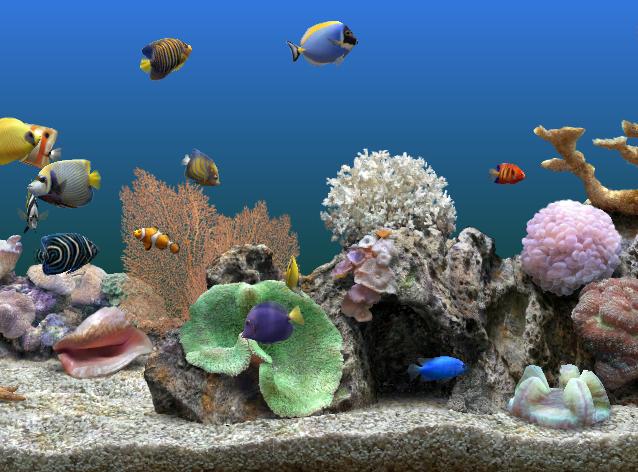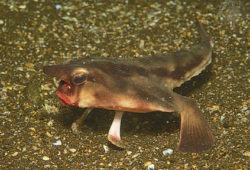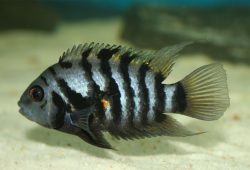Mimicry in the Marine Aquarium
In the article you will find some basic information on Mimicry in the Marine Aquarium.

Contents
Setting up a Mimicry Saltwater Aquraium
Mimicry is a term describing an animal’s ability to mimic another animal. In the world of marine aquarium fishes, there are many mimics. Some fishes, such as juvenile Eibli Mimic Tang (Acanthurus tristis) only mimic their model fishes as juveniles and then turn to their species specific coloration as adults. Other fishes, such as the Bluestriped Fangblenny (Plagiotremus rhinorhynchos), have the ability to switch from mimic coloration to species specific coloration at will.
While some mimics are decidedly poor choices for most marine aquaria (e.g. the bluestriped fangblenny), other mimics can be kept in an aquarium with their model, making an interesting and educational display. Keeping a juvenile Eibli Mimic Tang and an Eibli Angelfish (Centropyge eibli) in a 75-gallon aquarium or larger is one such set-up and will be discussed here.
Mimicry Behavior
As juveniles, mimic tangs mimic pygmy angelfishes of the Centropyge genus. This mimicry is only one stage in the tang’s development, and when it reaches the maximum adult size of the pygmy angel, the tang changes color to its species specific adult coloration. It is unclear exactly why mimic tangs do this, although some research has suggested that it has to do with accessing food sources they could not access as readily if they were readily identifiable as a tang.
Setting-Up the Aquarium
To set-up this tank, make sure there is plenty of swimming space and lots of caves and crevices. You will want to maintain stable water conditions with a temperature range similar to that of the fishes’ natural habitat (76-82 degrees F). The specific gravity (a measure of salinity) should stay between 1.020-1.025 with a consistent pH somewhere between 8.2 and 8.4.
The system can be either a fish-only aquarium or a reef tank, although the angelfish is not entirely reef-compatible and may nip at sessile invertebrates. If you decide to keep these fishes in a reef tank, you will probably also need high intensity lighting and a method for maintaining calcium and alkalinity at levels sufficient to sustain corals and other marine invertebrates.
The Eibli Tang
The Eibli Tang remains fairly small for a surgeonfish and should not exceed seven inches in captivity. Still, this tang needs an aquarium of at least 75 gallons. Like all tangs, the Eibli Tang is an herbivore that likes to graze continuously on algae which grows on live rock, so it is best to add this fish to an established aquarium that is at least a few months old.
Even in a mature tank, it is a good idea to offer this fish an herbivorous food such as nori several times a week. The Eibli Tang will be very aggressive toward other tangs, especially ones that are similar in shape and color, and so it is best to have the Eibli Tang be the only tang in the aquarium unless the aquarium is very large. As of this writing, an Eibli Tang can be obtained for about $35.00-$40.00.
The Eibli Angelfish
The Eibli Angelfish rarely exceeds six inches in length in captivity. Unlike the Eibli Tang, the Eibli Angelfish is an omnivore, and should be offered a variety of foods including spirulina, frozen or freeze dried mysis shrimp (don’t be surprised if the tangs eat this too), and other meaty foods. The Eibli Angelfish will most likely be more docile than the Eibli Tang and therefore should be added first so it can become established before the more aggressive tang is added. The Eibli Angelfish should not be kept with other dwarf angelfishes. As of this writing, an Eibli Angelfish can be obtained for about $35.00-$40.00.



